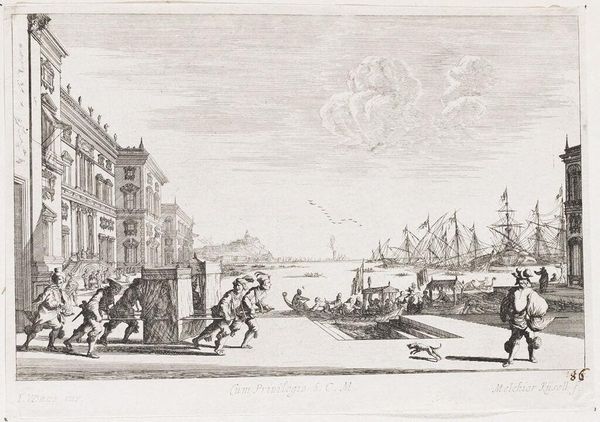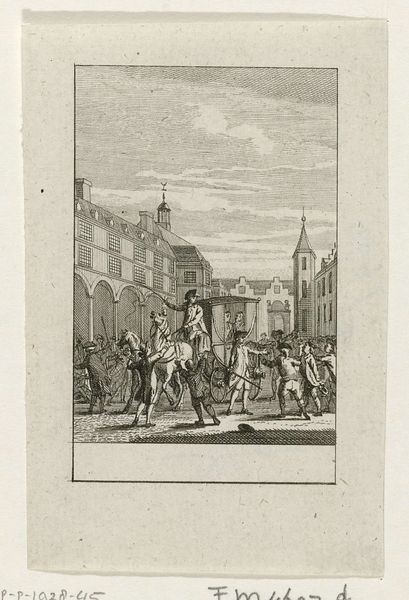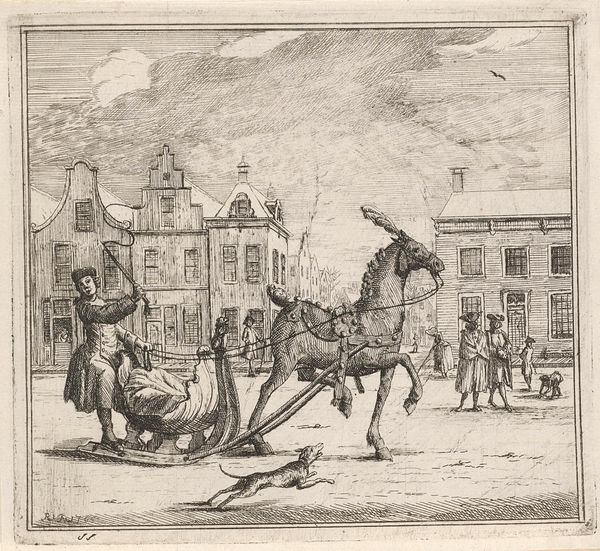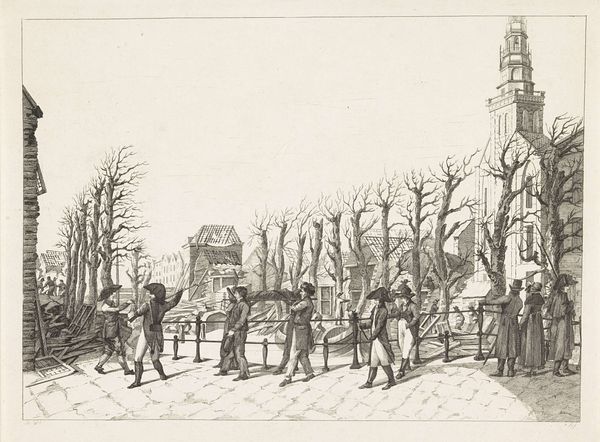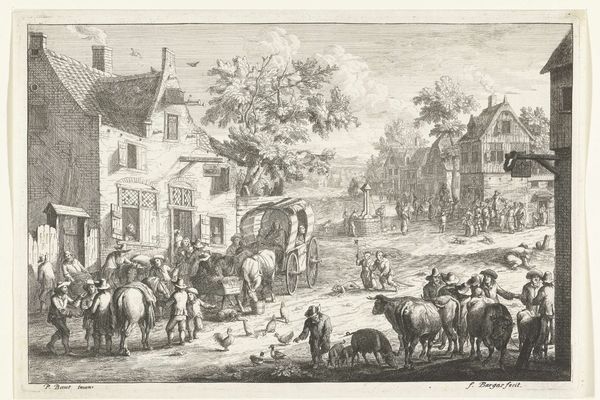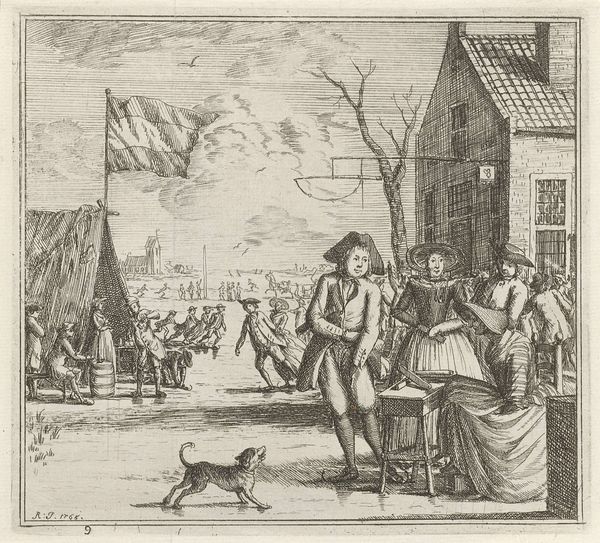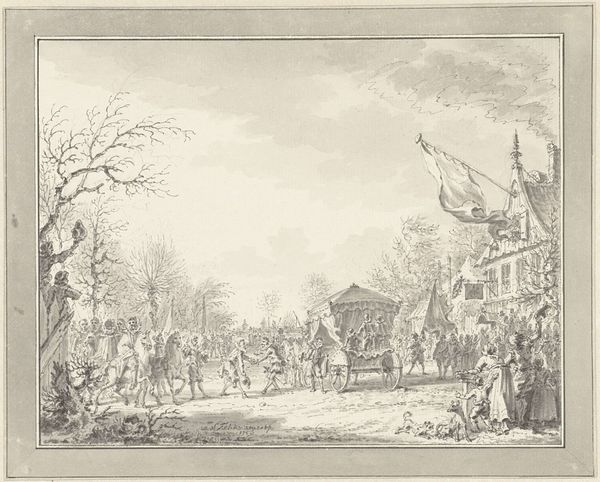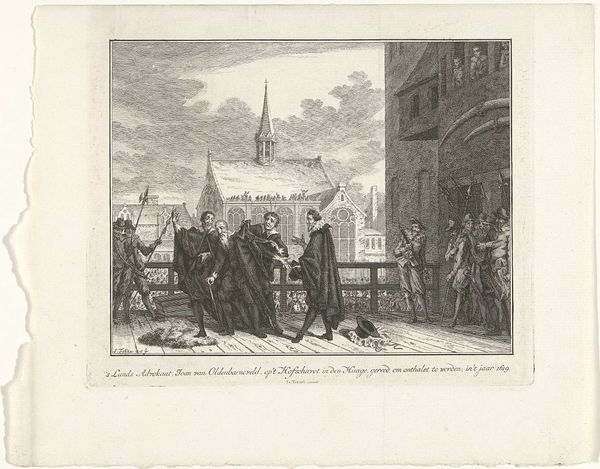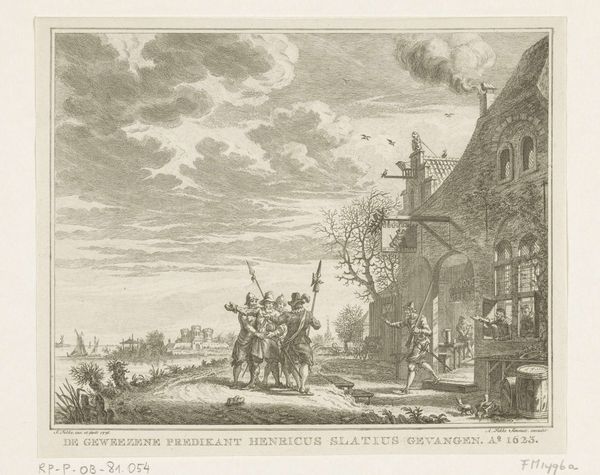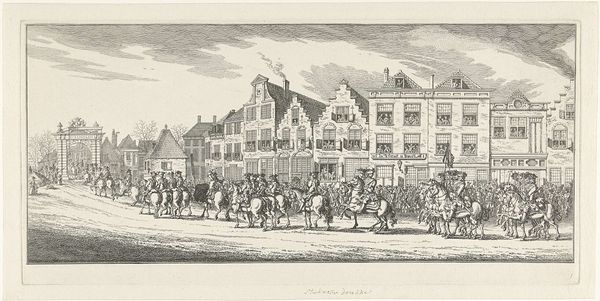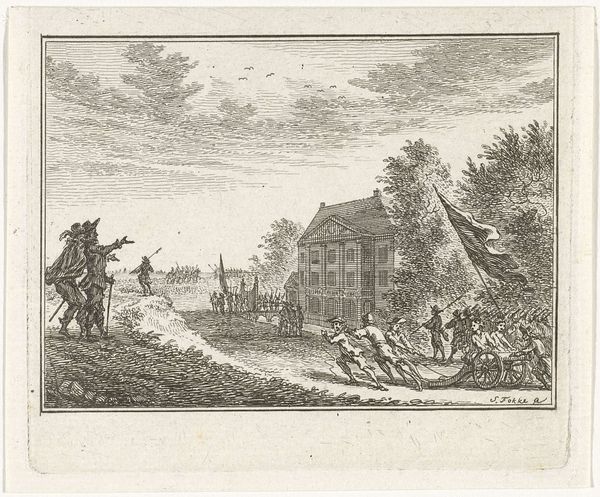
print, engraving
#
aged paper
#
dutch-golden-age
#
mechanical pen drawing
# print
#
pen sketch
#
old engraving style
#
sketch book
#
personal sketchbook
#
pen-ink sketch
#
pen work
#
sketchbook drawing
#
cityscape
#
genre-painting
#
storyboard and sketchbook work
#
engraving
#
realism
Dimensions: height 143 mm, width 157 mm
Copyright: Rijks Museum: Open Domain
Curator: This is Rienk Jelgerhuis’s “Stadsgezicht met hoornblazers op brug,” a cityscape featuring horn players on a bridge, dating back to 1765. It is an engraving. Editor: It’s incredible! The sheer level of detail captured with simple lines, like observing everyday life unfolding across a canal. You can almost hear the sounds of the city in this static image. Curator: Absolutely. Jelgerhuis, though lesser-known today, provides valuable insights into the material realities of 18th-century Dutch society through his work. Look closely at the paper; it’s aged, lending a sense of historical authenticity, a connection to the artisan who produced it. This was clearly created for the market, reproducible in multiple editions. Editor: That's interesting, especially considering how public celebrations were often connected to expressions of civic identity and authority. This image allows us to investigate social behaviors. The positioning of these horn players and passersby creates a narrative; it suggests perhaps the culture of public displays of music during that time, reflecting a degree of social unity—or perhaps some are being drawn together to the tune of an economic activity taking place. Curator: Exactly. Engravings, as a medium, played a crucial role in disseminating images and information to a broader public. And its dependence on cheap, base materials points at the wide consumption possible then. Consider the networks involved in creating and distributing these prints. Think of the workshops, the street vendors, and the consumers who purchased and circulated them. It makes art accessible. Editor: It does bring up some interesting aspects related to urban development and public perception. Notice how the architectural setting plays a key role – the buildings and distant windmill. Curator: You're correct to point that out. It highlights not only the Dutch’s engagement with their landscapes but also a specific socio-economic order within the urban setting. Jelgerhuis’ work wasn't just about the beauty of the landscape. Editor: I leave with more than just an aesthetic experience from this artwork but rather questions regarding civic life. Curator: Likewise. The work leaves one with the impression of how social networks influence production practices and consumption and a better insight of the role images and material forms play in the public domain.
Comments
No comments
Be the first to comment and join the conversation on the ultimate creative platform.
